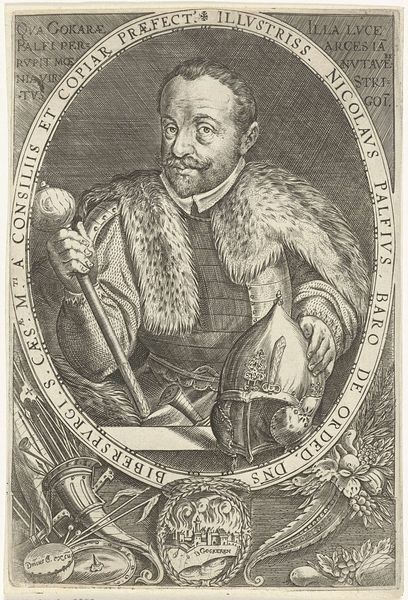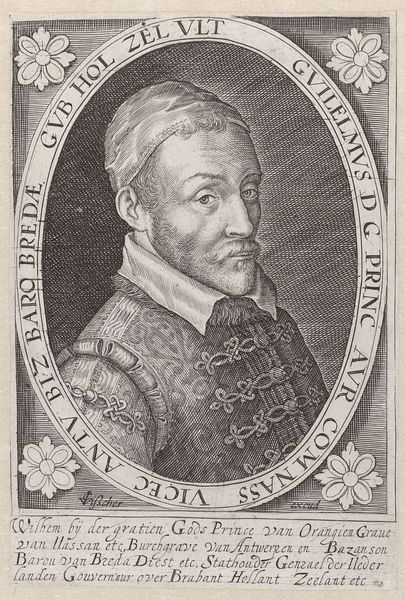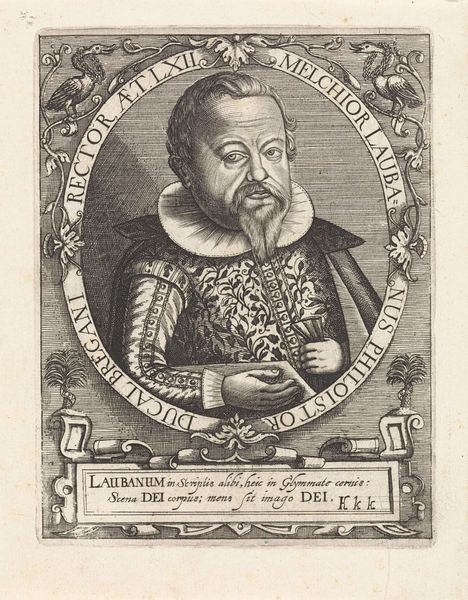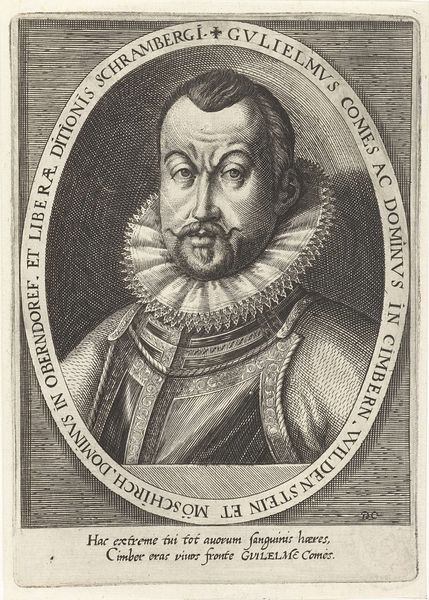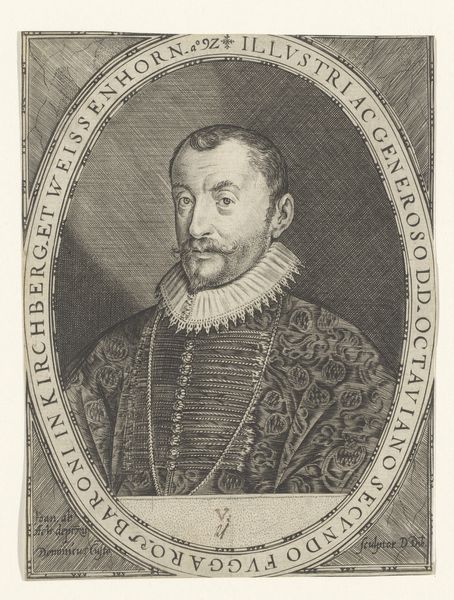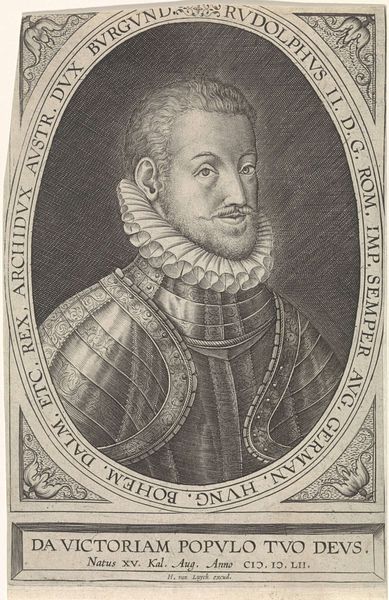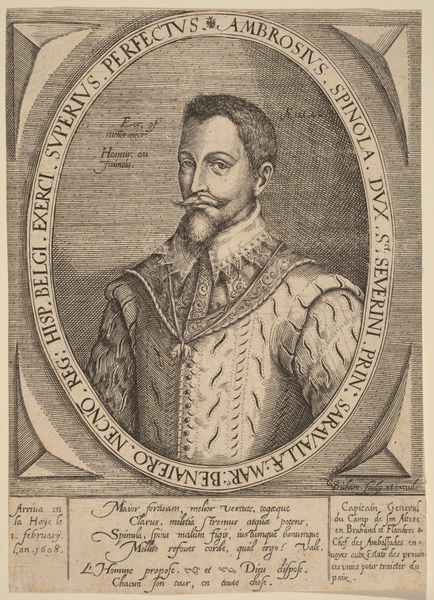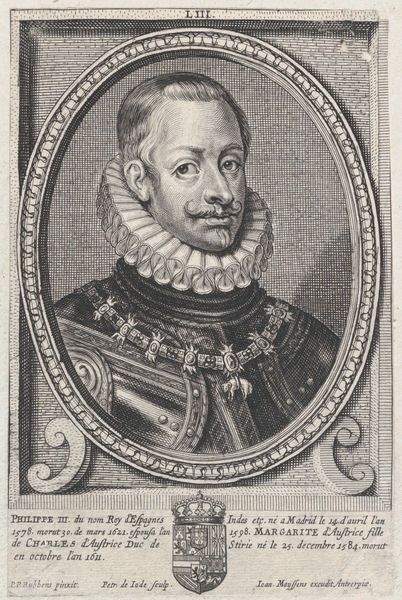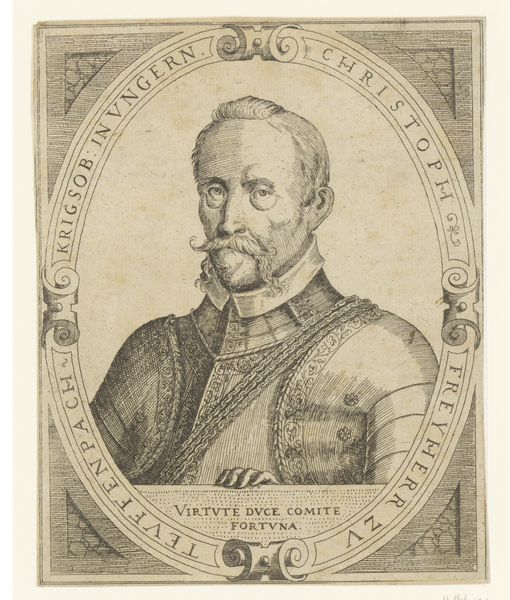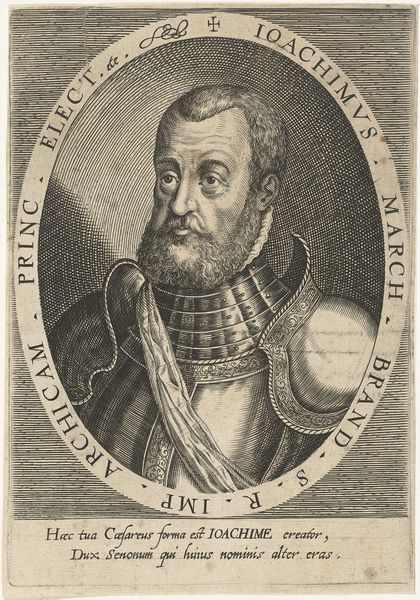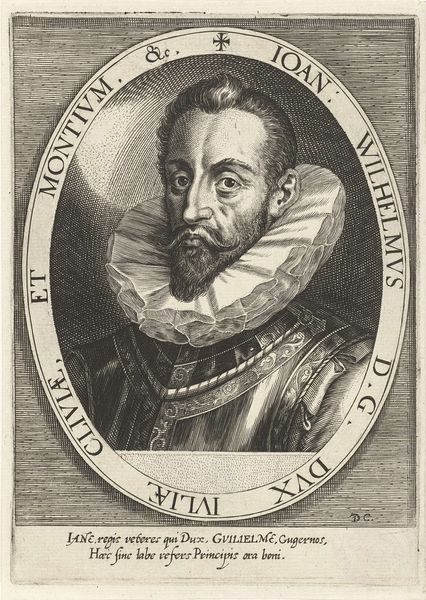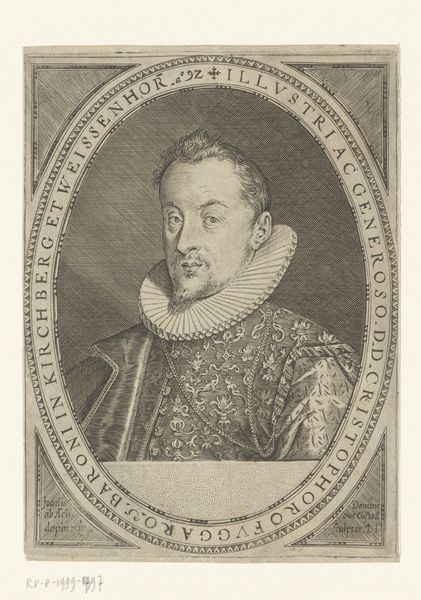
print, engraving
#
baroque
# print
#
old engraving style
#
history-painting
#
engraving
Dimensions: height 160 mm, width 127 mm
Copyright: Rijks Museum: Open Domain
Curator: The work before us is an engraving, dating from between 1590 and 1611, titled "Portret van Nicolaus Pálffy, baron van Erdőd" and is attributed to Hans Sibmacher. Editor: It strikes me as an image imbued with power. The baron's steady gaze and the trappings of his office, particularly that intricately rendered helmet, really give the impression of a man of authority and action. Curator: Indeed. Let's consider the engraving itself. The labor involved in creating such detailed lines with the burin, cutting into a copper plate… The consumption of materials in ink and paper, allowing for multiples to be printed and circulated—these all point to its accessibility to a broader audience than a painted portrait would have reached. Editor: The helmet is held almost as an emblem of honor, doesn’t it? Its presence tells a story of a warrior, or at least a commander; it signifies a martial tradition, heroism, and possibly sacrifice. The fur trim on his garment also denotes wealth, social standing, and power through consumption, in your terms. Curator: Precisely. The availability of materials is equally important here, with that sumptuous fur coming from further afield to show authority, even down to the precise cuts of the armor he would wear into battle. Editor: Beyond status symbols, this imagery connects with cultural ideals. Consider how this man wanted to be seen—a strong, honorable leader worthy of respect. Even the Latin inscription serves to enshrine his legacy in historical memory. Curator: And by reproducing this image, his power is spread, the machinery of his presence is amplified. It all goes to his material being and his ability to dominate those materials and images of himself, his influence is secured through accessibility to these works. Editor: It's intriguing how these combined elements create an individual of both substance and image. This speaks to more than just individual importance; the subject participates in this construction. Curator: It is quite illuminating to view Pálffy’s portrait not only as a depiction of status and strength, but as an artifact embedded within historical flows of labor, materials, and distribution. Editor: Looking closer into the image, thinking about how historical context shaped the symbolic elements we perceive, it opens new avenues for appreciating the complexities inherent in art like this.
Comments
No comments
Be the first to comment and join the conversation on the ultimate creative platform.
